Transfer of aversive respondent elicitation in accordance with equivalence relations
- PMID: 20119523
- PMCID: PMC2707136
- DOI: 10.1901/jeab.2009.92-85
Transfer of aversive respondent elicitation in accordance with equivalence relations
Abstract
The present study investigates the transfer of aversively conditioned respondent elicitation through equivalence classes, using skin conductance as the measure of conditioning. The first experiment is an attempt to replicate Experiment 1 in Dougher, Augustson, Markham, Greenway, and Wulfert (1994), with different temporal parameters in the aversive conditioning procedure employed. Match-to-sample procedures were used to teach 17 participants two 4-member equivalence classes. Then, one member of one class was paired with electric shock and one member of the other class was presented without shock. The remaining stimuli from each class were presented in transfer tests. Unlike the findings in the original study, transfer of conditioning was not achieved. In Experiment 2, similar procedures were used with 30 participants, although several modifications were introduced (formation of five-member classes, direct conditioning with several elements of each class, random sequences of stimulus presentation in transfer tests, reversal in aversive conditioning contingencies). More than 80% of participants who had shown differential conditioning also showed the transfer of function effect. Moreover, this effect was replicated within subjects for 3 participants. This is the first demonstration of the transfer of aversive respondent elicitation through stimulus equivalence classes with the presentation of transfer test trials in random order. The latter prevents the possibility that transfer effects are an artefact of transfer test presentation order.
Keywords: aversive conditioning; derived stimulus relations; fear; humans; skin conductance; stimulus equivalence; transfer and transformation of function.
Figures
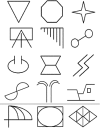
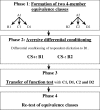
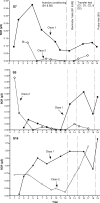
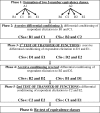
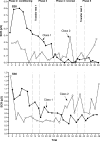
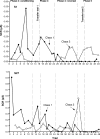
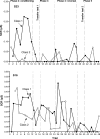

References
-
- Augustson E.M, Dougher M.J. The transfer of avoidance evoking functions through stimulus equivalence classes. Journal of Behavior Therapy and Experimental Psychiatry. 1997;28:181–197. - PubMed
-
- Augustson E.M, Dougher M.J, Markham M.R. Emergence of conditional stimulus relations and transfer of respondent eliciting functions among compound stimuli. The Psychological Record. 2000;50:745–770.
-
- Barlow D.H. Anxiety and its disorders: The nature and treatment of anxiety and panic (2nd ed.) New York: Guilford Press; 2002.
-
- Barnes-Holmes D, Hayes S.C, Dymond S, O'Hora D. Multiple stimulus relations and the transformation of stimulus functions. In: Hayes S.C, Barnes-Holmes D, Roche B, editors. Relational Frame Theory: A post-Skinnerian approach to human language and cognition. New York: Kluwer; 2001. pp. 51–72. In.
-
- Blackledge J.T. Functional contextual processes in posttraumatic stress. International Journal of Psychology and Psychological Therapy. 2004;4:443–467.
Publication types
MeSH terms
LinkOut - more resources
Full Text Sources

